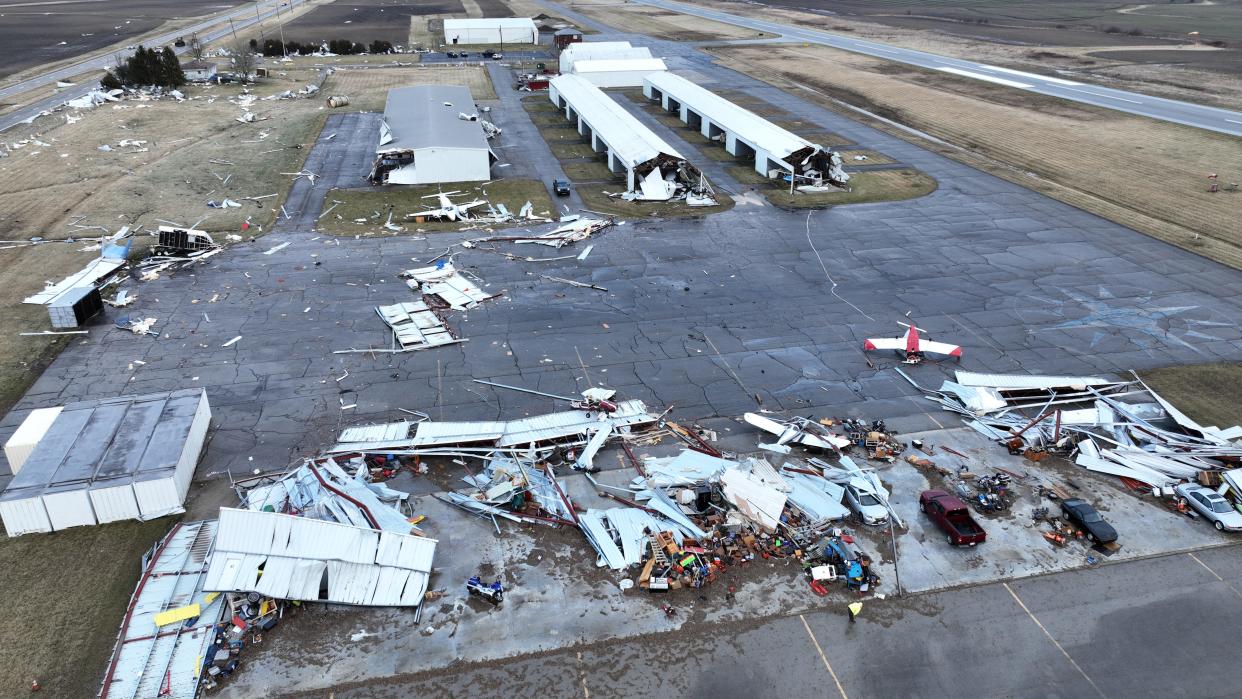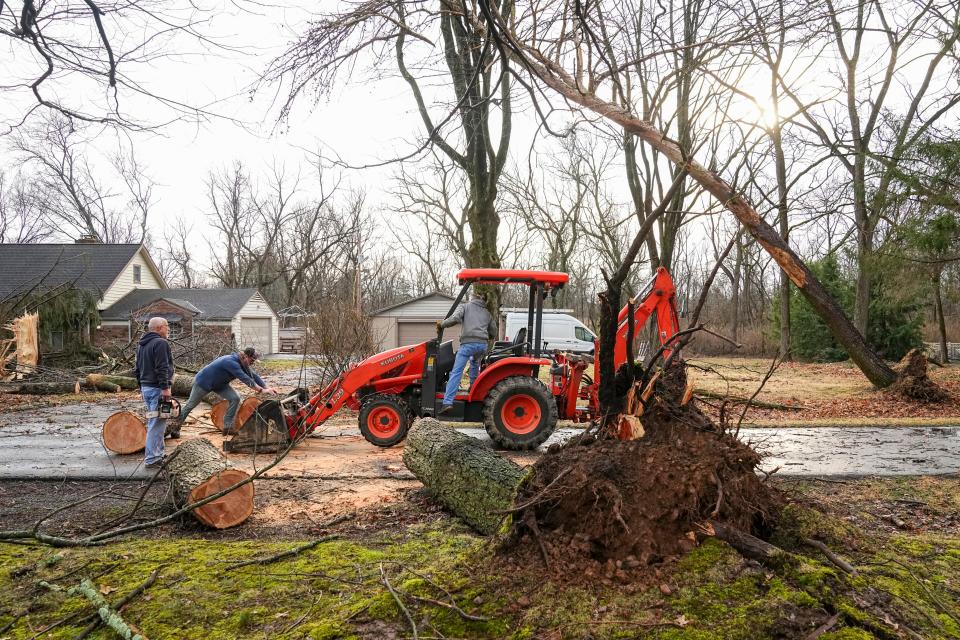Did tornadoes touch down in Ohio? How the National Weather Service confirmed 6 twisters

Strong storms early Wednesday morning have spawned several tornadoes in Ohio, including one in Clark County and another in Madison County. Now it's up to the National Weather Service to confirm it.
Here's how they go about doing that.
Five tornadoes confirmed across Franklin, Licking, Montgomery, Greene and Clark counties, Ohio
The National Weather Service in Wilmington has confirmed the following tornadoes Wednesday morning:
An EF2 tornado in the Blacklick area in Franklin County before weakening to an EF1 in Jersey Township, Licking County, east of Columbus.
An EF1 tornado in Hilliard in Franklin County. Damage occurred in a short path north of Roberts Road.
A tornado in Riverside, east of Dayton in Montgomery County. The tornado continued into Greene County before weakening.
An EF2 tornado near Springfield in Clark County, Ohio. The survey continues this afternoon and may include reported damage in Madison County, Ohio near the Summerford area.
An EF1 tornado near London and East Jefferson in Madison County, Ohio.
Additional information, including estimated maximum wind speeds and track data, will be made available Wednesday evening.
Sixth tornado confirmed in eastern Ohio
A sixth tornado, which was confirmed Thursday afternoon, passed through Malaga Township in northern Monroe County in eastern Ohio. It was an EF2 tornado on the Enhanced Fujita scale, with estimated peak winds of 120 mph reached in the area of Route 800 and Minder Road, according to the National Weather Service in Pittsburgh.

How are tornadoes confirmed?
The weather service says crews will need to survey possible tornado damage in person. Meteorologists were conducting those surveys Wednesday, focusing on the Interstate 70 corridor between the Dayton metro area and the Columbus metro area, where the damage appears to be concentrated.
The pattern of damage, not how much damage was caused, determines whether it was a tornado, according to the weather service. For tornadoes, with their violently rotating columns of air, damage often has a chaotic appearance, with larger uprooted trees often crossing each other. Weather service surveyors often look at larger uproots of trees to get a true idea of where the wind was blowing from.
What's the difference between a tornado and a microburst?
The National Weather Service defines a microburst as a localized column of sinking air within a thunderstorm. Wind speeds in microbursts can reach up to 100 mph or higher, which is equivalent to an EF1 tornado. Winds this high can cause major damage to homes and other structures and level hundreds of trees.
Again, the weather service looks at the pattern of damage to determine a microburst. Damage looks flattened out, with trees pointing in the same direction or fanning out from one another.
How are tornadoes rated?
The Enhanced Fujita Scale classifies tornadoes into the following categories:
EF0: Weak, with wind speeds of 65 to 85 mph
EF1: Weak, 86 to 110 mph
EF2: Strong, 111 to 135 mph
EF3: Strong, 136 to 165 mph
EF4: Violent, 166 to 200 mph
EF5: Violent, greater than 200 mph
Where is Clark County, Ohio?
Clark County, east of Dayton, showed a radar-indicated tornado from Springfield through the county line, according to the Clark County Emergency Management Agency. Another was possibly reported nearby a few minutes later southeast of Springfield, moving toward South Vienna.
Where is Madison County, Ohio?
Madison County, west of Columbus, also showed a radar-indicated tornado near the Franklin County border. Meteorologists will conduct surveys Wednesday and focus on the Interstate 70 corridor between the Dayton metro area and the Columbus metro area where the damage appears to be concentrated.
Tornados in February are more common than you might think
Despite still being winter, you might have been shocked to see that the National Weather Service forecasted thunderstorms, high winds, hail and even tornadoes for Tuesday and Wednesday. Here's what you need to know about winter tornadoes.
December and January are "the lowest months" for tornado formation, National Weather Service meteorologist Nate McGinnis said. As for February, severe weather and tornadoes form "fairly commonly" late in the month when winter begins to wane.
The NWS Wilmington office, which covers southwestern and central Ohio along with areas of Kentucky and Indiana, has recorded winter tornadoes almost every year since 2012. There were four winter tornadoes in 2014, three in 2015, five in 2016, one in 2017, 2019, 2021, and 2022, and two in 2023.
This article originally appeared on Record-Courier: 6 Ohio tornadoes confirmed through National Weather Service surveys

